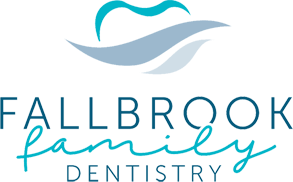January 26th, 2017

When a child is born, he or she will have 20 primary teeth and 32 permanent teeth. But sometimes kids are born with additional teeth, and our team at Fallbrook Family Dentistry calls this oral condition "hyperdontia." Primary teeth are the first set of teeth that erupt in your child's mouth, typically by the time they are 36 months old, and are shed by the time your child reaches the age of 12. Permanent teeth then take the place of the primary teeth and are usually fully-erupted by the time your son or daughter reaches 21 years of age. Anyone who develops more than 20 primary teeth or more than 32 permanent teeth has hyperdontia, and the additional teeth are referred to as supernumerary teeth.
While the cause of hyperdontia is not entirely clear, it is believed that there may be a genetic factor. Oral professionals have found that patients with extra teeth often have syndromes like cleidocranial dysplasia, Ehler-Danlos syndrome, Gardner syndrome, or cleft lip and palate. The prevalence of hyperdontia affects between one and four percent of the population in the United States, and the majority of cases are limited to a single tooth.
So, what is the best way to deal with hyperdontia? It really depends on the case. The treatment plan your doctor suggests varies according to the potential problem posed by the supernumerary teeth, as well as their type. Orthodontic treatment may certainly may help, but extraction can also be a good option. We recommend that children receive an oral evaluation or checkup no later than the age of seven. In addition to hygiene evaluation, this helps ensure your child does not experience hyperdontia problems.
If you suspect you or your child may be suffering from hyperdontia, please give us a call to schedule an appointment at our convenient Lincoln, NE office to be evaluated.
January 19th, 2017

At Fallbrook Family Dentistry, we know your dental health is closely connected to your overall health. We also know that the mouth can oftentimes be the first place to show signs of other bodily health issues.
Studies have shown possible links between periodontal (gum) disease and heart disease, and researchers have found that people with gum disease have an elevated risk of suffering from a stroke or developing coronary artery disease. Believe it or not, an estimated 70 to 80 percent of North American adults currently have some form of gum disease.
Gum disease, which affects the tissues that surround and support the teeth, is an infection caused by a sticky film of bacteria called plaque that forms on the teeth, mainly along the gum line. In its early stages, called gingivitis, gum disease can be treated by Dr. Jeffery Spahr, Dr. Janna Spahr, and Dr. Alyssa Cattle and often reversed.
To help keep your mouth and heart healthy, we’ve provided following tips to help prevent problems before they arise:
- Brush your teeth with fluoride toothpaste at least twice a day. Make sure you brush gently beneath the gum line around each tooth.
- Floss at least once a day.
- Have a dental checkup and cleaning twice a year, or as recommended.
- Eat a healthy diet. This includes avoiding foods with a high concentration of sugars or starches and consuming more fruits and vegetables.
- Avoid tobacco and copious levels of alcohol. If you smoke, quit. And remember, heavy drinking dramatically increases the risk of developing mouth and throat cancer.
Don’t put off your next visit to Fallbrook Family Dentistry any longer! If it has been a while since your last visit to our Lincoln, NE office, please give us a call!
January 12th, 2017

Are you afraid to open your mouth because you have bad breath? You’re not alone bad breath or Halitosis happens to everyone, at one time or another. If you have chronic bad breath there could be a number of reasons, including:
- Gum disease
- Sinus problems
- Bacterial infection in your mouth
- Stress
- Strong odor from something you ate
- Dry mouth
The good news is, none of the causes of bad breath are serious, and they can all be treated. There is a long list of DIY home remedies that have proven effective. Before you try any of them you should be evaluated by Dr. Jeffery Spahr, Dr. Janna Spahr, and Dr. Alyssa Cattle to make sure you do not have a serious oral infection. Of course, you should also always practice good oral hygiene. If you go a week without brushing your teeth, your bad breath is going to be horrible!
1. Cinnamon Mouthwash
Cinnamon is known to help prevent bacteria in your mouth, and lemon has strong citrus properties that will eliminate your bad breath problem.
Preparation
- Put a half teaspoon of cinnamon in a jar or bottle that has tight fitting lid.
- Next add the juice from two lemons freshly squeezed lemons.
- Combine all of the ingredients in a cup of lukewarm water and pour into your jar.
- Shake the jar well and set it aside for two to three hours.
- Before using the mouthwash always shake it well.
- Gargle and swish one to two tablespoons of the mouthwash for about a minute
2. Tea
Black and green tea are beneficial in prevent bad breath. Black tea aids in controlling plaque and bacteria that can cause bad breath. Green tea contains antibacterial properties that fight off the natural occurring germs in your mouth, keeping your breath fresh. Both black and green tea contains polyphenol, a property that can prevent the formation of the foul odor caused by bacterial growth.
Preparation
- Steep a black of green tea bag in one cup of hot water and drink one to two cups a day to keep your bad breath away.
3. Tea Tree Oil
Tea tree oil contains natural antiseptic and anti-fungal properties that help kill bacteria and fungi in your mouth, caused by particles of food left behind.
Preparation
- You will need one teaspoon of tea tree oil, peppermint oil, and lemon oil.
- Combine all three in eight ounces of lukewarm water and stir well. Use daily as a mouthwash to get rid of your bad breath.
December 29th, 2016

Watching the clock tick down the final seconds until midnight, many of us- Fallbrook Family Dentistry included- feel nostalgic about the passing year and hopeful about the new one to come. New Year’s Eve is one of the most widely celebrated holidays in the world, with over-the-top celebrations taking place in dozens of countries. The Gregorian calendar, which is widely used in Western nations and around the world, was implemented in 1582. Since that time, December 31st has marked the final day of the year, with midnight heralding the beginning of a brand new year. In the United States, New Year’s Day is a public holiday; government offices, schools, public organizations, and many businesses are closed for the day. Ponder the following fun facts as you think about your plans for the holiday:
- Approximately one billion people watch the New Year’s Eve ball drop in Times Square, New York City. This televised event is one of the most iconic New Year’s celebrations in the world. For many years, watching the ball drop meant tuning in to Dick Clark’s Rockin’ New Year’s Eve, an iconic television special dear to the hearts of many viewers.
- The idea for the New Year’s Eve ball came about because of a citywide ban on fireworks. Before 1907, when fireworks became illegal in New York City, celebrations included an elaborate fireworks show. The large, glittering, illuminated ball was developed as an alternative. Although the first ball was heavy at 700 pounds, the modern New Year’s Eve ball is made of Waterford crystal and tips the scale at six tons!
- The top five New Year’s resolutions are: to lose weight, quit smoking, get a new job, return to school, or increase personal savings. However, approximately 88% of New Year’s resolutions fail. But don’t let that discourage you! Resolutions are most likely to succeed when they are clear, achievable goals. Setting out a concrete plan to achieve your resolution also boosts your chances of success.
- Eating black-eyed peas on New Year’s Day is said to bring good fortune in the new year. Collard greens, cabbage, and ham hocks are also considered lucky foods to enjoy. Just steer clear of the chicken or turkey dinners; eating poultry is a bad omen for the year to come.
Whether you plan to stay in Lincoln, NE, or head out into the crowds to watch the ball drop in Times Square, New Year’s Eve is a time to enjoy friends and family. Send your loved ones well wishes for the New Year, and look for that special someone to share a midnight kiss with for good luck!






